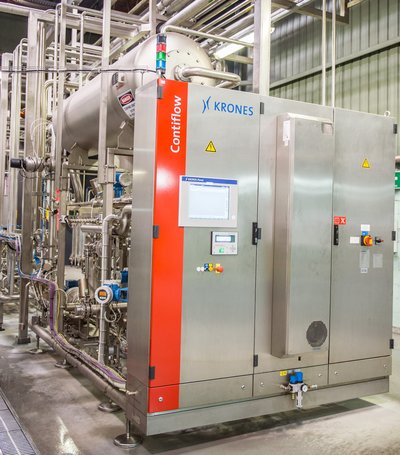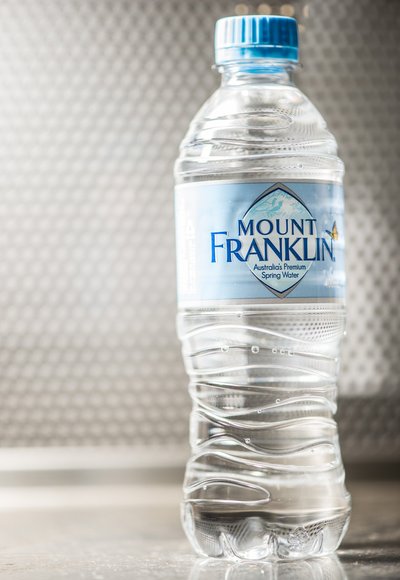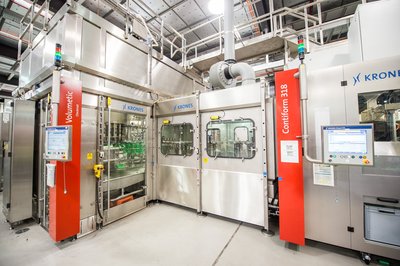In-house PET production saves more than just time
Friday, 05 July, 2013
Changing its outlook on new technology has led to Coca-Cola Amatil (CCA) investing heavily to tighten its supply chain. The $620 million Project Zero initiative involves several key investments, including changing over to in-house production of PET containers, preforms and closures.
“We have to see new technologies as profit-boosters, not merely as a cost factor,” said Bruce Herbert, Durector Supply Chain of CCA at its Sydney headquarters.
Project Zero will see CCA install more than 30 Krones blow-moulder/filler monoblocs between 2007 and 2015, while also offering one of the lightest 600 mL PET containers ever produced by Coca-Cola. These changes will have positive effects for both the company’s cost structure and the environment.

Fourteen of CCA’s production facilities are located in Australia, with the blow-moulder/filler monoblocs installed in the six largest of these, all of which are operationally self-sufficient.
CCA’s decision to make major investments in old PET lines happily coincided with Australian Government-supported investment projects offering tax incentives.
“What we wanted was to find investments helping us to reduce our cost basis,” said CCA’s Bill Mossati. “What we opted for was to make group-wide use of blow-moulder/filler monoblocs.”
CCA’s new ability to design PET bottles in-house made lightweighting development easier. In 2000, 600 mL Mount Franklin water bottles weighed 29 grams. By 2004, they weighed 21.5 g; by 2010, 16.6 g. Once the first blow-moulder/filler monoblocs from Krones were commissioned in 2011, the ‘Easy-Crush bottle’ was developed, weighing just 12.8 g without closure.

The total lightweighting of 56% since 2000 has won the Mount Franklin bottle the Global Packaging Award World Star. “We’re convinced there’s still scope left for further lightweighting,” Herbert said.
The Coca-Cola bottle has also been reduced by 33% from 2000 to 2012; it now weighs 20 g. Along with Mexico, Australia now has the world’s lowest-weight 600 mL Coca-Cola bottle within the Coca-Cola corporate matrix.
In the company’s Northmead plant, which uses three Contiform Bloc systems, monobloc-synchronising the blow-moulder and filler has reduced water consumption by 8%. This water saving was essentially what had previously been used to rinse the containers prior to filling them. The CO2 footprint of each container was reduced by 22%, while 15-23% less PET raw material is used for container production, 33% less PET is used for closures and 30% less energy is required for blow-moulding the bottles from preforms. An estimated 65,000 km of annual truck transport has been eliminated.
In all, CCA estimates it will save more than 9000 tonnes of PET raw material each year once all production lines are equipped with the blow-moulding/filling technology.
CCA reduced its CO2 footprint further in 2012 when it commissioned its own $57 million preform and closure factory, eliminating the need for transport of these components. The Eastern Creek Preform Plant has an annual capacity of more than 3 billion units.

By the end of 2013, once all lines have been commissioned, CCA will have a total of 18 blow-moulder/filler monoblocs from Krones in Australia, 13 in Indonesia, three in New Zealand and one in Papua New Guinea.
To meet main-season peaks, increase the number of SKUs and offer more consumer-specific packages, CCA has installed three flexible canning lines from Krones, plus two hotfill lines.
“Project Zero has enabled CCA to expand its product portfolio while also cutting its costs and improving its service support and delivery capabilities for its customers,” Herbert explained.
“In the period from 2001 to 2012, we increased the number of different SKUs from 194 to 1100, we upped our proportion of DIFOTAI consignments (delivered in full on time accurately invoiced) from 83 to 97% and our ROIC (return on invested capital) from 7 to 24%. Our target is to use the measures initiated to save costs of 30-40 million dollars annually over the upcoming three years, starting in 2013.
“Not only will CCA in the future be utilising further options for automation and goods logistics, it will also aim to deploy new technologies for filling and packaging,” said Herbert. “For us, innovative packaging is just as important as the product it contains.”
Apricot packaging goes linerless
Blossom Hill Packing has introduced a linerless fruit lid/fibre-based tray combo as part of its...
Edenvale Foods focuses on product innovation with the help of automation
As the functional snackfood business enters its next phase, it became crucial to upscale to...
Intelligent packaging solutions for the bakery industry
There have been many advancements in the bakery industry in recent years, particularly in the...








